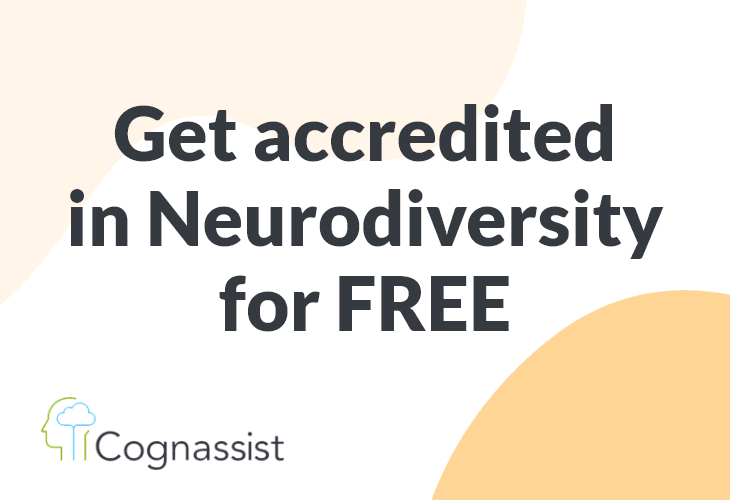How to support neurodiverse learners: #7 Visual Perception

Our visual perception allows us to organise information we’re seeing and interpret it accurately.
It involves things like hand/eye coordination, copying information and mental visualisation.
“The ability to perceive complex patterns and mentally simulate how they might look when transformed[.]” (The Cattell-Horn-Carroll Theory of Cognitive Abilities, 2014)
Our visual perception can also affect our non-verbal memory, as the information we see, however we interpret it, is then committed to memory.
A learner can have 20/20 vision and still experience difficulties processing visual information because it’s about how our brain processes the information, rather than our eyes.
Difficulties with visual perception can cause noticeable behaviours, like:
- Copying visual information incorrectly.
- Unable to solve visual problems or accurately repeat tasks that have been demonstrated.
- Less likely to be able to visualise ourselves completing tasks, learning new skills or achieving certain goals.
Our three top tips for supporting a need in visual perception
#1 Review work and notes with learners
One-to-one support with tutors is really important to help learners feel supported throughout education. When learners are more likely to make mistakes when copying notes, it can help for tutors to scan through a learner’s notes and help to identify where they have made mistakes.
We recommend first asking the learner if they feel comfortable with someone checking over their notes before getting into the regular discussion, as some learners may find it patronising if they’re required to show personal notes to their tutor.
But it can be a great starting point to discuss where learners might be struggling and have constructive discussions that give learners a better understanding of the skills, knowledge and behaviours they need to succeed.
Rather than pointing out mistakes or missing information directly, it helps to ask learners if they can identify the mistake themselves first and, if not, discuss what it might be, using logic-based reasoning until they can think of the right answer.
It’s not a test to see how much they’ve written down or remembered, but it’s another way for tutors to understand the progress of individual learners and build a more personalised learning journey.
#2 Avoid presenting too much visual information
This is a common trait of tutors, and it’s not necessarily their fault. There is a perception that it’s better to over-prepare and provide learners with pages and pages of material, simply hoping some of it will stick.
And in fact, it’s a human trait. Give us a blank page, and we want to fill it. But nobody likes having huge amounts of information thrown their way.
Often, we don’t realise that we’re only supposed to look at some of it, not all of it, which can have the opposite effect we intend and makes learning quite a demoralising process.
Keeping visual information paired back to the essentials, in everything from lesson planning to final presentations, provides less visual strain for learners who have visual perception difficulties.
Don’t fill the page, and not only will learners be more likely to perceive and remember key information but so will tutors, making them more efficient and effective in their role.
#3 Encourage discussions
Discussing visual problems or tasks together or in small groups allows for learners to ask questions and also receive verbal explanations for visual problems they may otherwise struggle with.
Our brains make assumptions all the time, and we don’t know when we’re making mistakes – otherwise we wouldn’t let ourselves make them in the first place.
Discussions help learners to see something from different perspectives and recognise and question their own assumptions. The more discussions included in learning, the more comfortable learners become talking about what they don’t understand and asking questions with their peers.
I think we all accept that tutors are just one part of the process of learning and giving learners more than one perspective on different topics and tasks can aid better comprehension.
Dr. Louise Karwowski, Head of Science, Cognassist
So, what’s next?
We’re about to bring you something very exciting. A serialised set of guides on how to identify and support learners with a need in the eight key cognitive domain.
How to support neurodiverse learners: |
We’ll be posting one guide a week, rounding up with a podcast with Dr Louise Karwowski, Head of Science at Cognassist, who will discuss the importance of starting the conversation about neurodiversity with your staff and learners.
If you like the sound of understanding more about neurodiversity, you can register for free for the NCFE endorsed Neurodiversity Masterclass here:
You can also check out the full guide How to support Neurodiverse learners now.












Responses